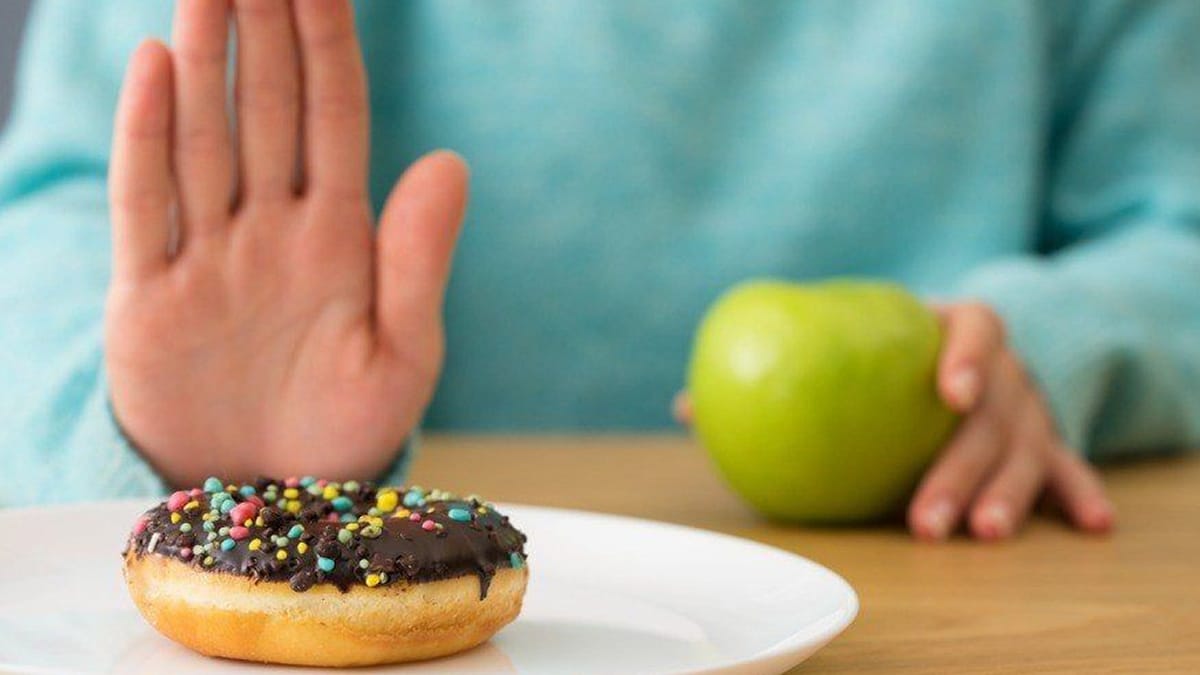5 Surprising Triggers That Destroy Your Weight Loss Progress
Losing weight is hard enough without hidden forces working against you. Even if you eat clean, exercise regularly, and stay motivated, there are subtle but powerful triggers that can quietly sabotage your progress. In this article, you will discover five surprising triggers that destroy your weight loss progress, why they matter, and exactly what you can do to neutralize them.
5 Surprising Triggers That Destroy Your Weight Loss Progress
By the end, you will have actionable solutions to protect your efforts and accelerate your results.
Staying aware of these secret saboteurs is not just about vanity. It’s about reclaiming your health, boosting your confidence, and making every ounce of effort you invest in weight loss count. Once you understand these triggers, you’ll never look at your habits the same way again.

Hidden Trigger 1: Chronic Sleep Deprivation and Irregular Sleep Patterns
Most people underestimate the destructive power of poor sleep. Research from Harvard Medical School shows that adults who sleep less than six hours per night are more likely to gain weight compared to those who sleep seven to nine hours. When you don’t sleep enough, your body produces more ghrelin (the hunger hormone) and less leptin (the satiety hormone). This imbalance makes you hungrier, slows your metabolism, and increases cravings for high-calorie, high-sugar foods.
Another surprising aspect is irregular sleep timing. Even if your total hours look fine, going to bed and waking up at inconsistent times confuses your circadian rhythm. This can trigger insulin resistance, higher cortisol levels, and fat storage around the belly.
Solution: Prioritize seven to eight hours of quality sleep in a dark, cool, and quiet room. Establish a consistent bedtime and wake-up time, even on weekends. Limit blue light exposure from screens at night and avoid caffeine at least six hours before bedtime. Many people who fix their sleep report easier weight loss without changing anything else.
Hidden Trigger 2: Stress Overload and Emotional Eating Loops
Stress is an invisible but devastating trigger that destroys weight loss progress. Chronic stress floods your body with cortisol, which increases appetite and drives fat storage, especially in the midsection. According to the American Psychological Association, nearly 40 percent of adults admit to overeating or eating unhealthy foods when stressed. This creates an emotional eating loop: you feel stressed, you eat for comfort, then you feel guilty and stressed again.
What’s more, stress can change your brain’s reward pathways. It makes high-fat, high-sugar foods feel even more pleasurable, turning occasional indulgences into daily habits. This effect is subtle but powerful and can stall your weight loss even if you’re counting calories.
Solution: Incorporate stress-management habits into your weight loss plan. Try deep breathing, meditation, yoga exercises, or short nature walks. Journaling, talking to a supportive friend, or practicing gratitude also helps. If emotional eating is severe, consider working with a therapist or joining a support group. Reducing stress not only protects your waistline but also improves sleep and energy levels, amplifying your overall results.

Hidden Trigger 3: Sneaky Liquid Calories and “Healthy” Drinks
One of the most overlooked triggers that destroy weight loss progress is hidden liquid calories. Smoothies, juices, gourmet coffees, “healthy” sports drinks, and even some plant-based milks can contain hundreds of calories and dozens of grams of sugar. Because your brain does not register liquid calories the same way it registers solid food, you feel less full and end up eating more overall.
A 2019 study published in The American Journal of Clinical Nutrition found that reducing sugary drinks alone can lead to significant weight loss over time. Yet many dieters still believe their green juice or coconut latte is harmless.
Solution: Track what you drink for a week and add up the calories and sugar. Replace high-calorie drinks with water, sparkling water, or unsweetened tea. If you love smoothies, make them at home with controlled portions and high-fiber ingredients. This small shift can save you thousands of calories per month without any feeling of deprivation.

Hidden Trigger 4: Overestimation of Exercise Calorie Burn
Exercise is essential for health, but overestimating how many calories you burn is a classic mistake. Fitness trackers and cardio machines often display inflated numbers, making you think you’ve “earned” an extra dessert or snack. In reality, most moderate workouts burn fewer calories than you expect. For example, a 30-minute brisk walk may burn only 150–200 calories — far less than a muffin or a specialty coffee drink.
This mismatch between perceived effort and actual burn can create a dangerous feedback loop. You work out harder, feel hungrier, then “reward” yourself with extra food, wiping out your deficit.
Solution: Use exercise primarily for fitness, mood, and muscle maintenance rather than as a calorie-burning strategy. Focus on strength training to increase your resting metabolic rate and pair it with high-protein meals to support lean muscle. Instead of guessing, track your food intake accurately and keep your energy balance in mind. When you decouple exercise from eating permission, your weight loss progress becomes more predictable and sustainable.
Hidden Trigger 5: Ultra-Processed Foods Marketed as Diet-Friendly
Food companies are masters at making “diet” products look healthy. Protein bars, low-fat snacks, frozen “light” meals, and sugar-free desserts often contain refined starches, artificial sweeteners, and additives that can spike insulin, disrupt gut bacteria, and increase cravings. A 2019 randomized trial at the National Institutes of Health showed that people eating ultra-processed foods consumed about 500 extra calories per day compared to those eating minimally processed foods, even when macros were matched.
This means that even if you hit your calorie targets, the composition of your food matters. Highly processed “diet” products can still sabotage your hunger signals, making it harder to stop eating and easier to regain lost weight.
Solution: Build your meals around whole, minimally processed foods — lean proteins, vegetables, fruits, nuts, seeds, and healthy fats. Read labels carefully and aim for ingredients you recognize. If you use convenience foods, treat them as occasional backups rather than daily staples. This shift stabilizes your appetite, improves nutrient density, and helps your weight loss progress feel effortless.
Putting It All Together
Each of these five surprising triggers — poor sleep, chronic stress, hidden liquid calories, overestimation of exercise burn, and ultra-processed “diet” foods — can quietly erode your weight loss efforts. The good news is that once you identify them, you can take specific, practical steps to neutralize their effects. Awareness plus action equals results.
Think of your weight loss journey as building a strong house. Nutrition and exercise are the bricks, but sleep, stress management, and food quality are the mortar. Without mortar, the house crumbles. When you address both bricks and mortar, your progress becomes steady and lasting.
Three to Five Practical Tips to Avoid These Triggers
Plan your sleep schedule as seriously as your workouts.
Use non-food coping strategies for stress such as deep breathing or walking outdoors.
Audit your drinks for hidden calories every week.
Separate exercise from food rewards; track both honestly.
Prioritize whole foods over processed “diet” products and read labels critically.
Frequently Asked Questions
What is the most common hidden trigger that destroys weight loss progress?
Poor sleep and chronic stress are among the most common hidden triggers. They disrupt hormones that control hunger and fat storage, making weight loss much harder.
How can I stop emotional eating caused by stress?
Identify your stress triggers, practice relaxation techniques, and seek support if needed. Yoga, mindfulness, or journaling can help break the stress-eating loop.
Are smoothies bad for weight loss?
Not necessarily, but portion size and ingredients matter. Homemade smoothies with controlled fruit, vegetables, and protein can be healthy, but store-bought versions often contain excessive sugar and calories.
Does exercise help with weight loss or just health?
Exercise is crucial for overall health, muscle maintenance, and mood, but weight loss primarily depends on a calorie deficit. Use exercise as a complement, not a license to eat more.
Are low-fat or sugar-free diet products safe for weight loss?
Some can fit into a plan, but many ultra-processed diet foods can still trigger overeating or disrupt hunger cues. Whole, minimally processed foods are generally more effective.
What are five recommended tools or products to support my weight loss journey?
A reliable digital food scale to track portions.
A sleep-tracking app or wearable to improve sleep hygiene.
A mindfulness or meditation app for stress management.
A high-quality blender for making controlled smoothies.
A resistance band or adjustable dumbbell set for at-home strength training.
How quickly will I see results once I fix these triggers?
It varies by individual, but many people notice reduced cravings, better energy, and steady weight loss within two to four weeks of addressing these hidden triggers.
Final Thoughts: Five to Seven Action Steps
Make sleep a non-negotiable priority.
Build daily stress-relief rituals into your routine.
Replace high-calorie drinks with water or unsweetened beverages.
Track your actual calorie intake and don’t rely solely on exercise.
Base your meals on whole, minimally processed foods.
Reevaluate your progress every two weeks and adjust as needed.
Stay patient and consistent; small changes compound into lasting results.
These steps are not glamorous but they work. By neutralizing these surprising triggers, you transform your weight loss journey from frustrating to fulfilling. You’ll experience better energy, improved health, and results you can sustain.
Reference & Additional Reading
Inspired by studies and insights from:
www.health.harvard.edu
www.menshealth.com
www.healthline.com
www.womenshealthmag.com
www.ncbi.nlm.nih.gov
www.webmd.com
www.medlineplus.gov
www.tridenttech.edu
www.burnexia.com

